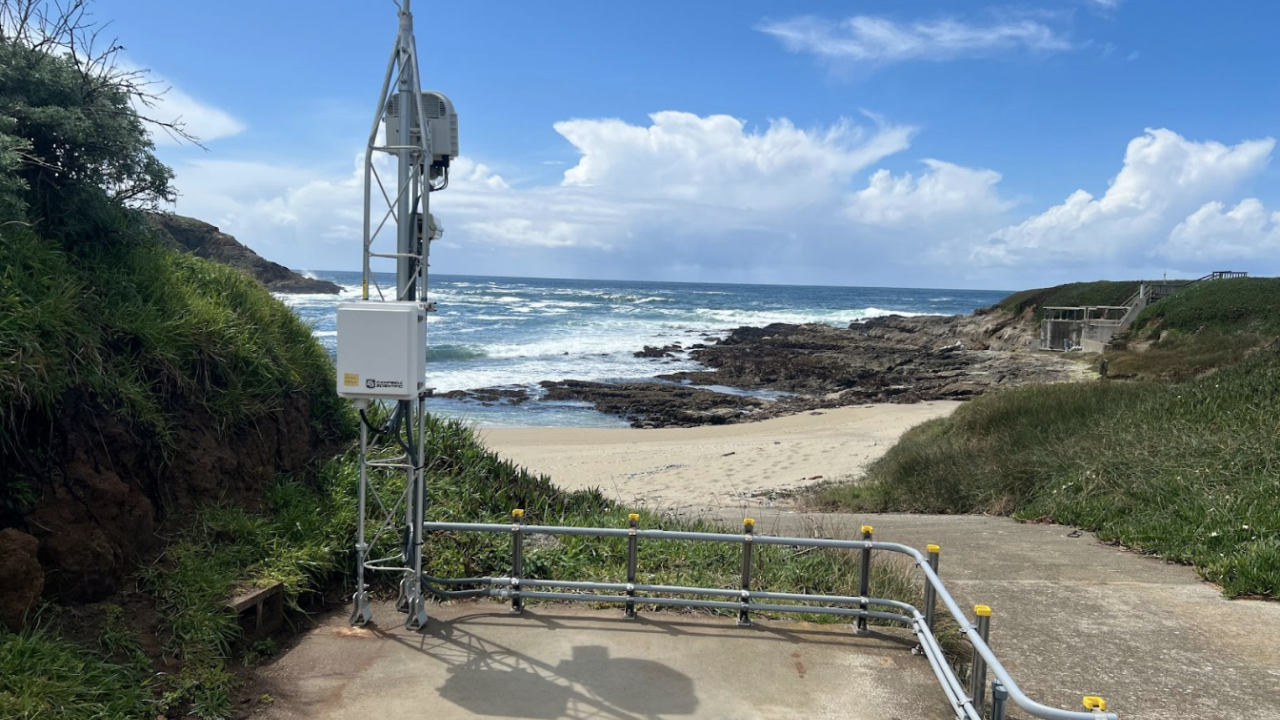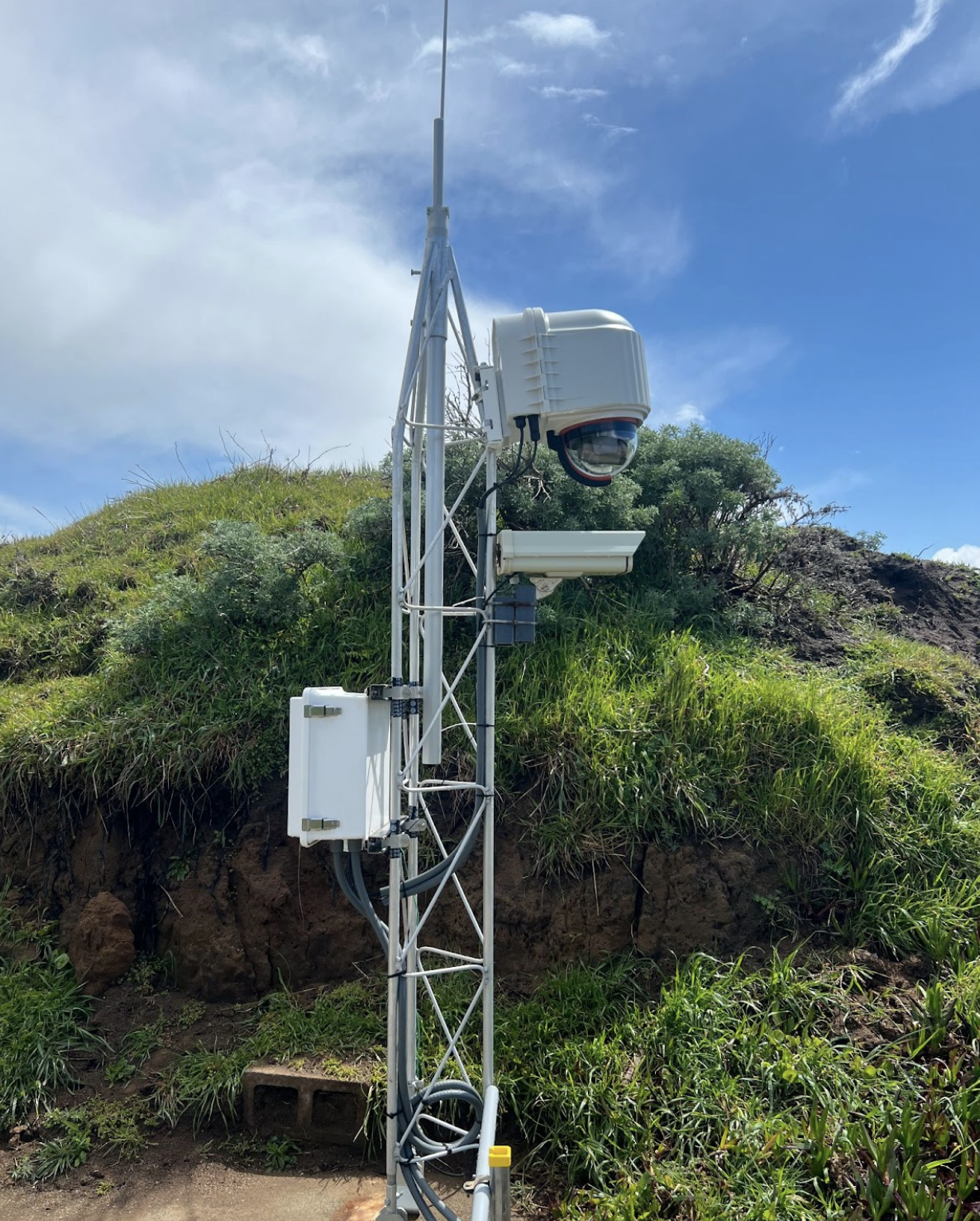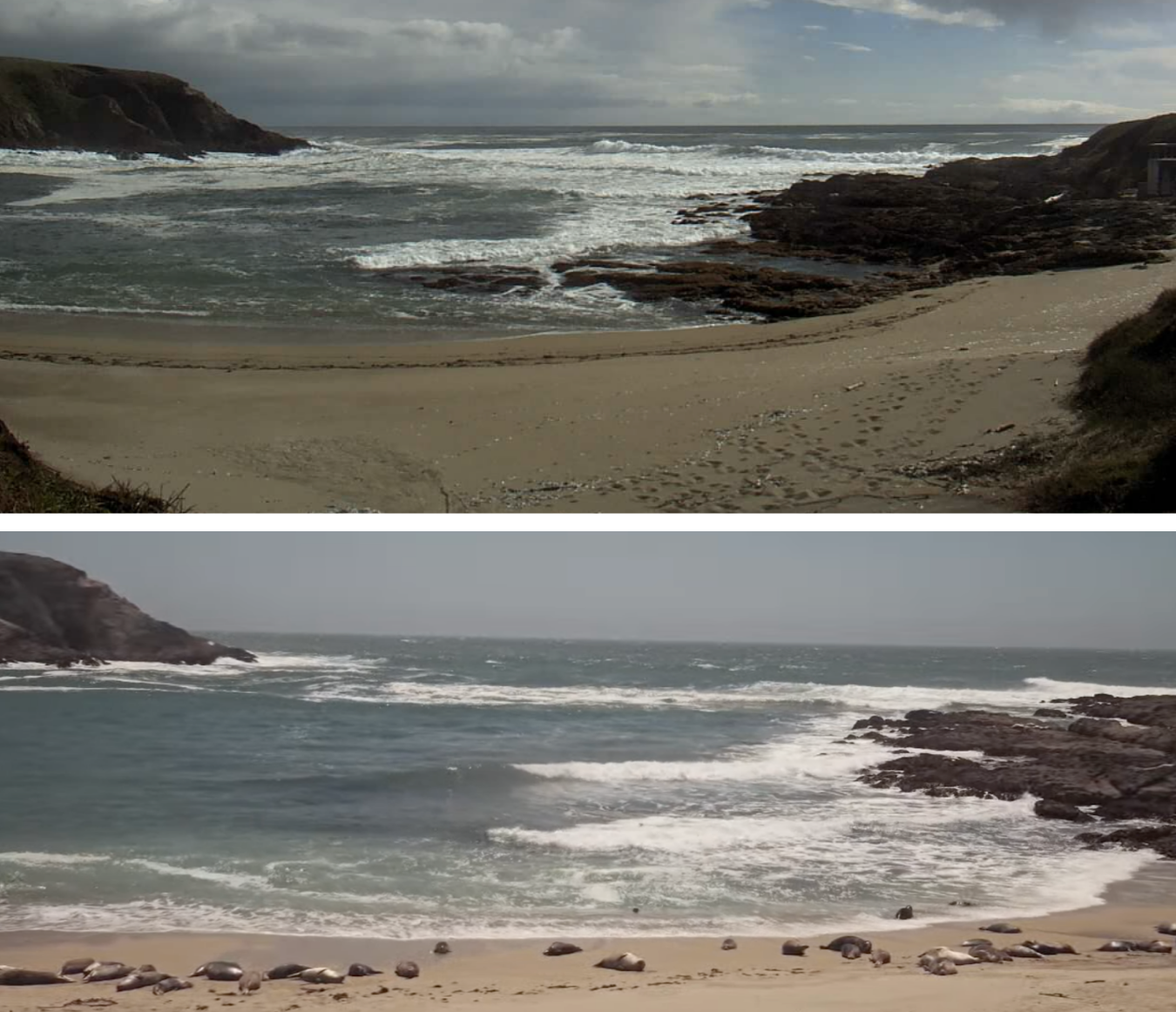
The Meaning of a Webcam
Quick Summary
- A crowdfunding campaign to install a new webcam at BMR has revealed the importance of connecting the community to research.
The UC Davis Bodega Marine Reserve (BMR) has a webcam in Horseshoe Cove to capture images of marine life. However, a 2023 survey analyzing users’ experiences with the webcam revealed complications with the camera:
"A constantly clear picture would be nice. Too often the picture is fragmented or just blacked out."
"Sometimes [I] can’t see anything, [and] other times the picture is broken up."
"The cam resolution is low and it does not refresh often."
"The [camera] image is not consistently clear or usable.”
In the same survey, 160 out of 187 respondents shared that they extensively used the webcam for observing oceanic and weather conditions. However, when rating the performance of the camera on a scale of 1 to 10, they gave the old webcam an average of 5.9.
To provide better public access, BMR participated in a Crowdfund UC Davis project to raise funds for a new webcam. The initiative was a success, surpassing its $7,500 goal by raising $11,725 from over 70 donors, which was also the highest-grossing crowdfunding campaign in its cohort of 26 programs.
Suzanne Olyarnik, BMR Director, reports that support for the webcam was widespread. “People were motivated for [a new camera]. People understand the mission of [the reserve’s] educational purposes.”
The Process

Though the funding was provided as early as November 2023, winter storms delayed installation and threatened the security of the camera’s location. “We've suffered some of the worst waves I've seen in my 20 years [here]. We had one wave come over the entire bluff and bring logs, granite, and debris within five feet of the buildings,” says Phillip Smith, Bodega Marine Laboratory (BML)’s Physical Plant technician, who installed the camera.
Michael “Moose” O’Donnell, Deputy Director of CMSI, also helped replace the old camera. He describes that even normal ocean wave patterns caused trouble for the old camera. “The big problem with the old one was [that it was] behind a plexiglass window 50 feet from the ocean, which meant it was constantly getting salt buildup on the screen.”
The new camera has therefore been reinforced with corrosion-resistant metal spires to block debris from hitting the tower. To avoid blurry vision, the camera comes with a cleaning mechanism to wipe off the camera everyday.
However, the project did not come without additional challenges. The old webcam was connected to failing internet cables, requiring a replacement of dated underground cables that also span almost 300 feet long.
Additionally, the weak internet connection at Bodega cannot stream the live feed to every simultaneous viewer. Consequently, the data had to be offloaded to YouTube, which has also been difficult to work with. Fortunately, the new camera now live streams at 720p, which is a major upgrade from the old camera’s limited ability to only produce an image every 10 minutes.
All of these tasks placed Smith and O’Donnell on a time crunch to get the camera running before seal pupping season starts in early April. During springtime, the reserve closes down the beach to all human activity for the annual birthing of the seal pups so that the animals are both comfortable and protected to take refuge at Horseshoe Cove.
Smith says that the biggest emphasis was getting the camera in on-time to avoid disturbing the seals. “It's a happy achievement. Everyone looking through that camera will be able to watch all these baby seals moving up and down the beach learning how to swim,” Smith reflects.

Casting a Wide Message
Olyarnik indicates the potential of the new webcam. Researchers rely on the camera for various projects, from directly assessing fog input from climate change, to observing the growth dynamics of terrestrial plants. The webcam also documents these metrics, which are useful for the researchers at BML. She clarifies that since human activity must be extremely limited to protect such sensitive projects. “We've been here for almost 60 years. It's important that we have [the reserve] protected for our main mission [to provide] research and education. We need to make sure that the folks doing their research here don't get impacted by recreational activities and unrestricted access.”
Aside from the research, O’Donnell comments that “[the camera] is a super resource. We have a big mission at Bodega to protect the environment and keep it pristine for study. But we also have a job to inform the public about what's going on in the world. This is a neat way to do it.”
Survey Responses:
"I have been going to Bodega Bay for ~52 years. Your webcam is very relaxing and it makes me feel good. Our family has also visited the Marine Lab/Reserve over the years [and] the wildlife is awesome. Thank you."
"This is the only reliable source for Bodega Bay Area weather, wind, and wave conditions. The webcam is vital for updated conditions for people not in the area at the moment.”
"This webcam is a huge help as a key bit of information to help decide if an hour drive to the coast would be worth it for going to the beach. I ALWAYS check this webcam before going."
O’Donnell adds that due to the popularity of the new camera, there are plans to implement an additional camera with the leftover funds, in due time. “We'd like to install another camera at a different location to get a different view of the offshore where we might observe interesting oceanography.”
The new webcam is now in-testing on our YouTube channel and will soon be streaming to our website. In addition to visual access from the new webcam, BML is open every Friday from 2 to 4 pm for public tours with a reservation.
About the Author:
Elijah Valerjev, UC Davis class of 2024, is a Molecular and Medical Microbiology major with an Education and Professional Writing double minor. Interested in science communication, he enjoys the storytelling aspect of science writing, and is especially interested in connecting research topics to societal issues. Elijah works as board editor for the Aggie Transcript Undergraduate Research Journal, in addition to his work for the CMSI. In his spare time, he can be found enjoying his hobbies which include boxing, fiction writing and watching movies.
